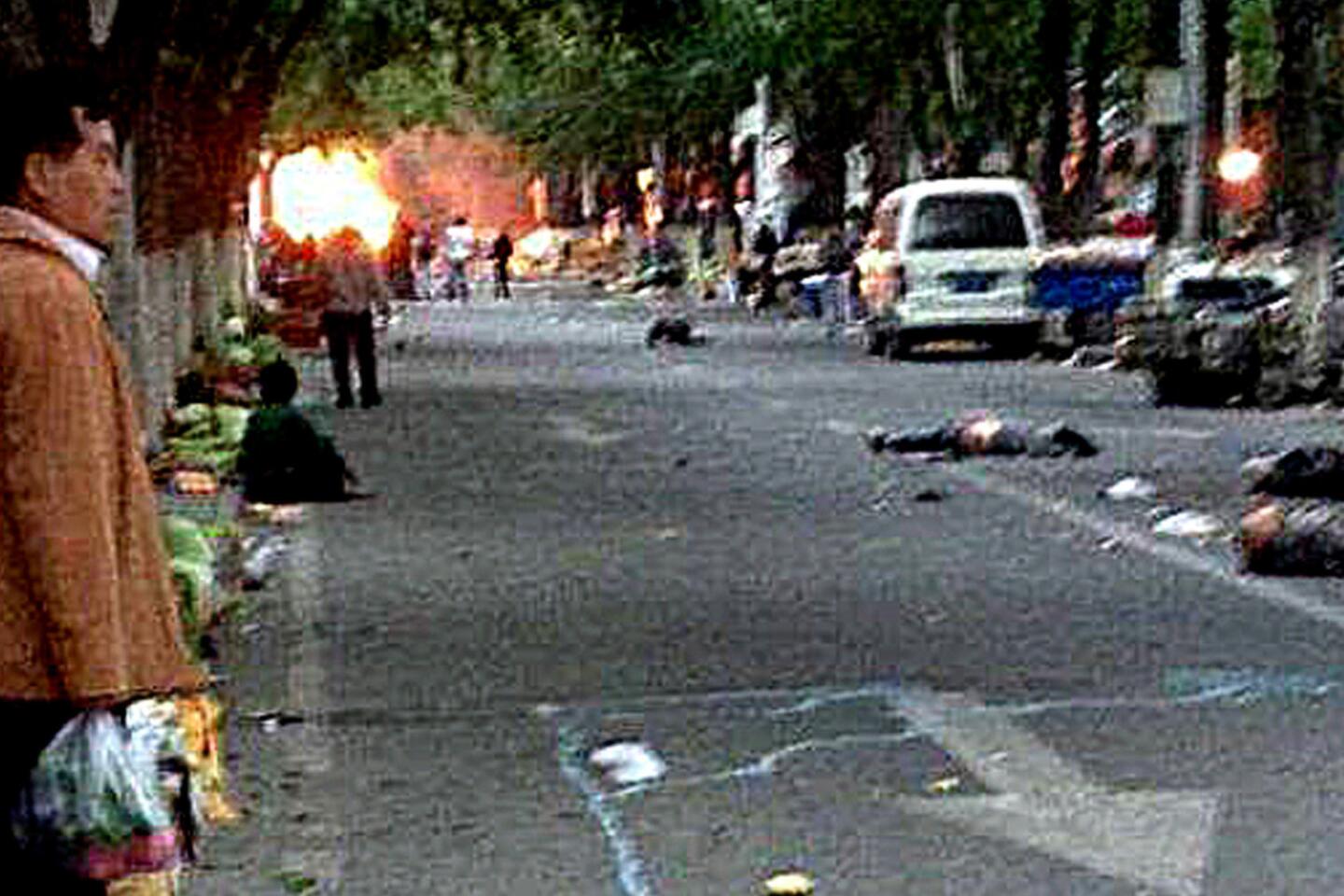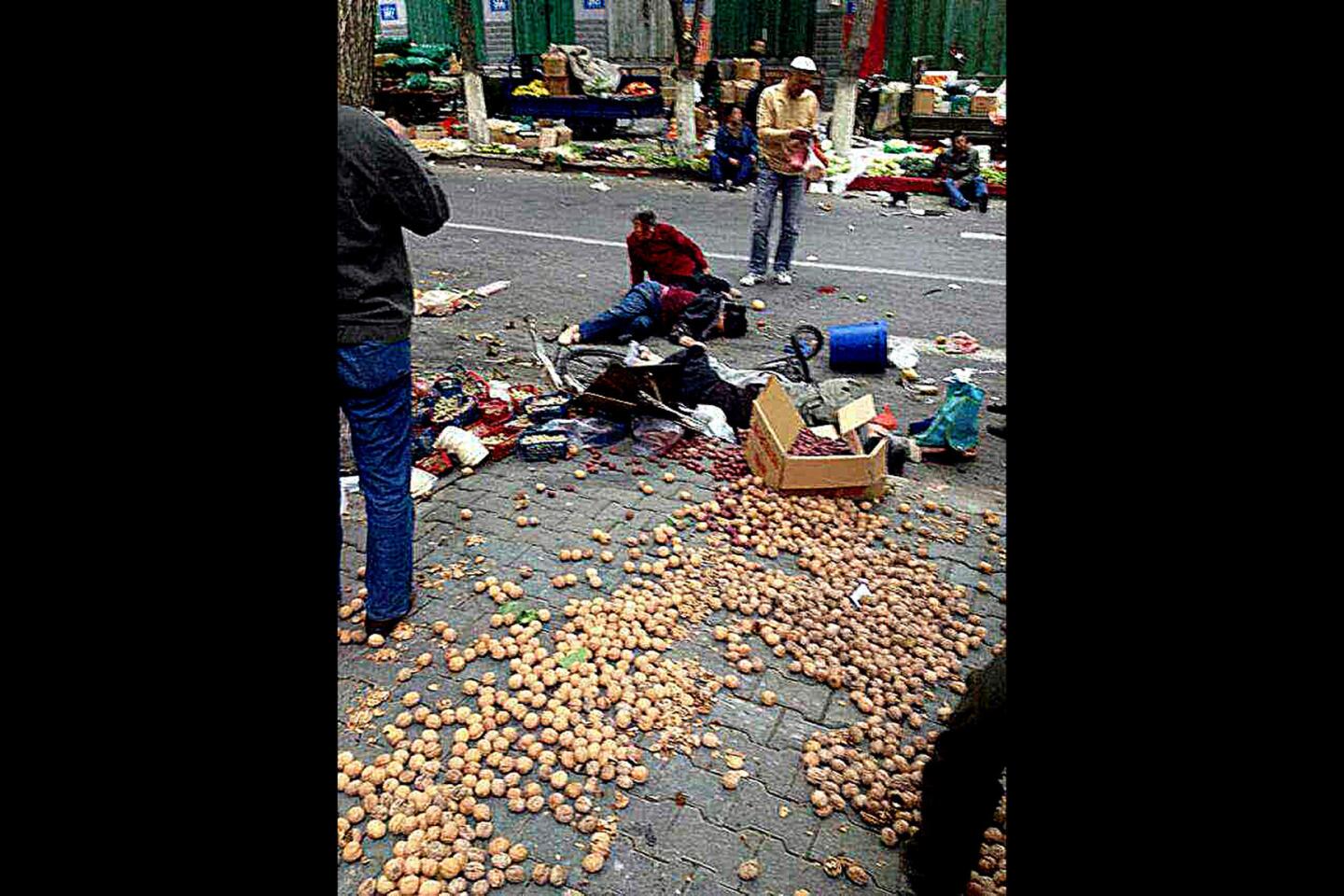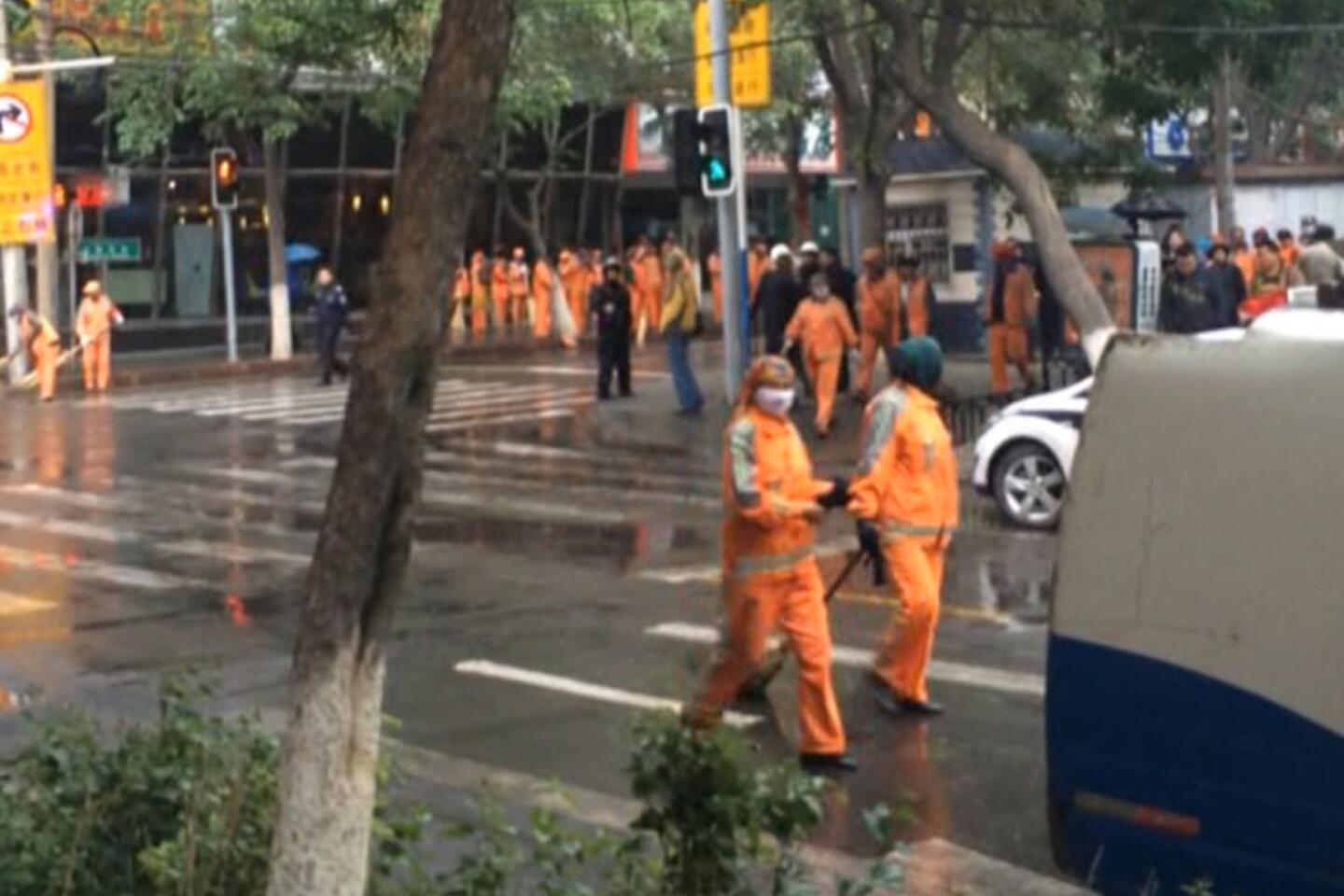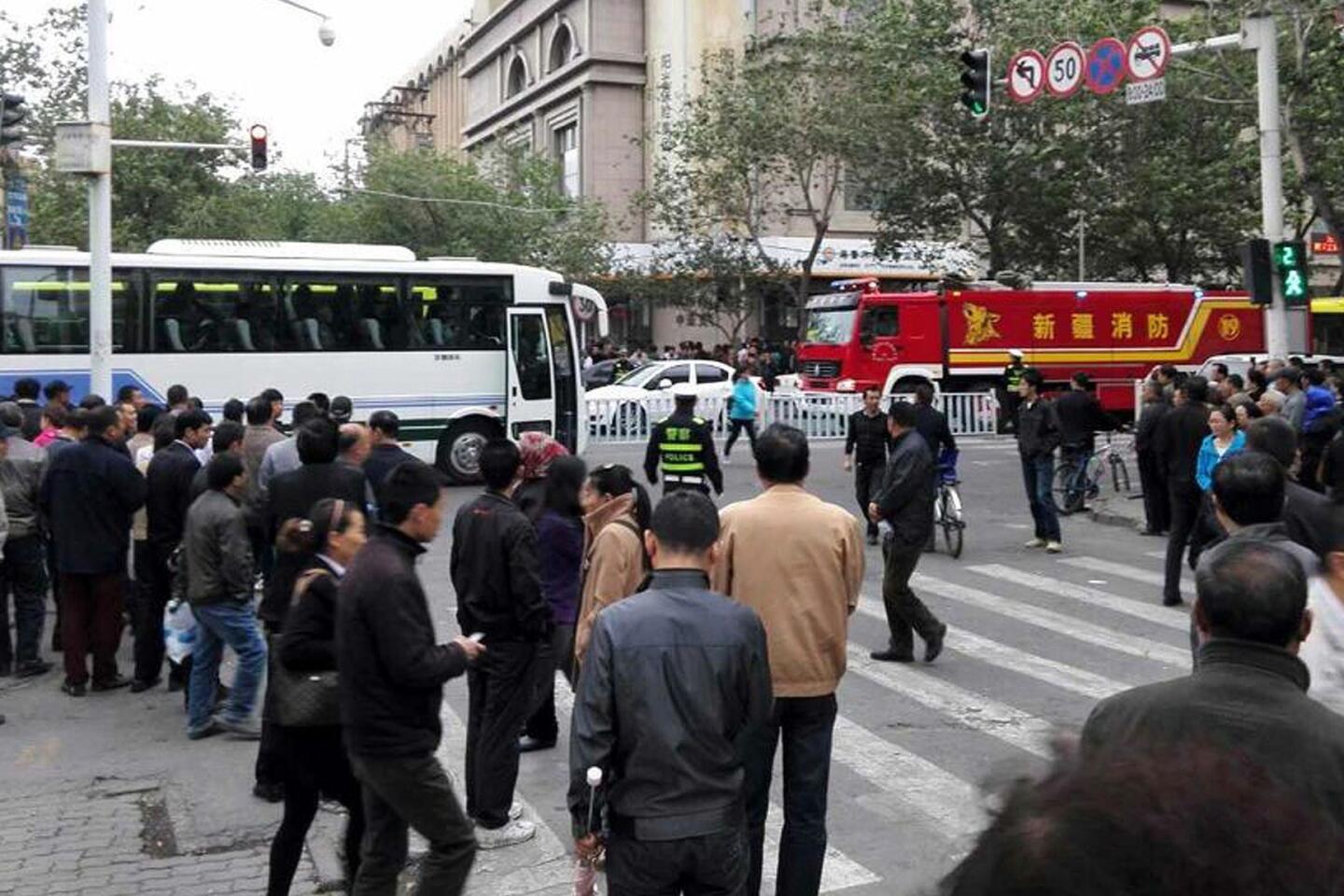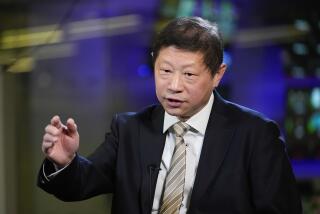Xinjiang attacks attributed to China’s Uighurs grow in sophistication
- Share via
Reporting from Urumqi, China — Zhou Ping had just taken out her wallet to pay for her vegetables at a busy street market when the SUV burst through the barriers, overturning tables laden with fresh produce and knocking the 50-year-old retiree to the pavement.
The vehicle came to a halt, then exploded. Two minutes later, another SUV plowed down the road and exploded as well.
At least 31 people died in the attack Thursday morning in Urumqi, the capital of China’s northwesternmost region, Xinjiang. Zhou considers herself lucky to have escaped with only a lost wallet. Her older sister was less fortunate, suffering deep gashes to her legs, back and an eyelid.
“When I got up, I was covered in vegetables and dirt and blood,” said Zhou, who spoke in the hallway outside her sister’s hospital room Thursday night. “I was in complete shock. My wallet — it was like it exploded.”
The attack on the morning market was the most sophisticated and perhaps the deadliest of a recent spate of bombings and stabbings attributed to separatists among the Uighur population, a Turkic-speaking, mostly Muslim ethnic minority in China’s northwest.
Ethnic and cultural tension has been rising in Xinjiang for decades as more ethnic Han Chinese move into the region, rendering the Uighurs a minority in most areas. Officially Beijing treats Xinjiang as an autonomous region, like Tibet to its south, but Uighurs complain that the central government has stifled religious and cultural freedom. More extreme elements here have been fighting for a separate state. The area declared a short-lived independence in 1933.
“The Chinese government has the confidence and capability to crack down on the audacious terrorists, who will never achieve their purposes,” Chinese Foreign Ministry spokesman Hong Lei said Thursday at a briefing in Beijing.
Police put out a notice Thursday night seeking two men from Hotan, a town southwest of Urumqi, who they said fled from the scene by bus. The men, ages 27 and 30, had Uighur names. They are believed to have been accomplices.
The attack took place at 7:50 a.m., the peak time at the market, which is patronized mostly by retirees who come early to shop for bargains or to exercise in an adjacent park.
Witnesses said the SUVs drove through a barricade and that the occupants tossed explosives from the vehicles’ windows. The explosions left bodies strewn on the street and set clothing on fire, witnesses said.
Wu Gang, 54, an ambulance driver who lives in the neighborhood and was off-duty Thursday, said he heard multiple explosions.
“We heard these bangs, one after another. It sounded like fireworks or maybe construction, but then we heard the sirens and knew it was an attack,” Wu said.
Urumqi was also the scene of ethnic riots in 2009 that left nearly 200 people dead.
The preliminary toll of Thursday’s attack approaches that of a March 1 knife assault at the Kunming railroad station, in which 33 people died, one of the worst such incidents in China in recent memory.
When Chinese President Xi Jinping visited the region last month, the Urumqi train station was attacked by knife-and-bomb-wielding assailants. An unverified claim of responsibility was released shortly afterward by the Turkestan Islamic Party, a shadowy separatist group that operates out of neighboring Pakistan and uses the name East Turkestan to refer to Xinjiang.
Another knife attack took place at a train station in Guangzhou this month.
Since January 2013, 170 people have died in Uighur separatist attacks, according to the Institute for Central Asian Studies at Lanzhou University. Experts say the attackers are becoming bolder and more professional in their tactics.
“Car ramming is a tactic militants in Xinjiang have been using since 2011. What is new is the power of the explosives. It’s possible that militants from outside the country are teaching those in China, either via the Internet or materials that they send in to Xinjiang,” said Jacob Zenn, an analyst of African and Eurasian affairs with the Washington-based Jamestown Foundation.
“But it appears there’s an underground network of Uighur militants in China, and now the cells are activating. Who knows how many cells there are, but there could be a lot,” he said.
Beijing has limited the information on the attacks, releasing few details and avoiding prolonged media coverage. Experts say officials may be driven by embarrassment at the separatists’ ability to find holes in state security, but also by a desire to deprive the militants of the instability they seek to foment.
Since the Sept. 11, 2001, attacks on the U.S., China’s central government has redoubled its efforts to portray the separatist movement as part of international terrorist networks. This week, 39 people in Xinjiang were convicted of activities such as “spreading comments on ethnic hatred” over the Internet, illegally making guns and watching terrorism videos.
On the street, meanwhile, official reaction followed the script from previous attacks. By nightfall Thursday, the blood and debris had been cleared away by street cleaners, aided by a heavy rain. Most shops in the neighborhood were closed and those that were open had been turned into temporary headquarters for police and paramilitary members.
“People are scared,” said a 65-year-old resident who gave only his surname, Mao. “These attacks are getting better planned and better organized.”
Times staff writer Julie Makinen contributed to this report.
More to Read
Sign up for Essential California
The most important California stories and recommendations in your inbox every morning.
You may occasionally receive promotional content from the Los Angeles Times.
